Do you have a question about the Olympus STYLUS TOUGH-6010 and is the answer not in the manual?
Details the process of accessing and using the camera's menu system for settings.
Instructions on how to securely attach the camera strap.
Guide on inserting the battery and memory card correctly into the camera.
Explains the symbols used for navigation and operation on the camera screen.
Details shooting in the P (Program Auto) mode for balanced exposure control.
Guide to using Scene Composition (SCN) mode to automatically optimize settings for specific scenes.
Explains how to use the Beauty mode for enhanced skin tone and texture in portraits.
How to use the optical zoom feature to magnify subjects without losing image quality.
Details the different flash modes and how to select them for optimal lighting.
Guide to focusing and shooting subjects at very close distances.
How to manually adjust image brightness for desired exposure levels.
How to set and use the self-timer for taking pictures with a time delay.
Instructions on using the LED illuminator as an auxiliary light for focusing.
Understanding histograms to evaluate image exposure and luminance distribution.
Explains different viewing modes for selecting and inspecting images.
How to customize the information shown on the image playback screen.
Covers settings for image size and compression to optimize for printing or web use.
How to set white balance to match different lighting conditions for accurate colors.
Adjusting ISO for light sensitivity, impacting image brightness and noise.
Using fine zoom to magnify images without losing quality.
Using digital zoom to further magnify images, potentially affecting quality.
Selecting autofocus modes like Face Detect and ESP for accurate focus.
How to record sound with still images for added context.
Reducing blur from camera shake for clearer images and movies.
Brightening subjects affected by backlight for better detail.
Utilizing Scene Composition (SCN) mode for optimized shooting in various situations.
Capturing moments just before the shutter is pressed in movie mode.
Enabling tap shooting functionality, particularly for Snow mode.
Method for creating panoramas where the camera automatically captures frames.
Method for creating panoramas where the user manually captures and composes frames.
Using software for combining images into panoramas.
How to restore shooting functions to their factory default settings.
Applying various artistic filter effects to images.
How to automatically play back images as a slideshow.
Using Perfect Fix to automatically improve image quality.
Applying Beauty Fix to enhance skin tone and eye appearance.
How to resize images for different purposes like email or web.
Instructions for cropping images to focus on specific areas.
Embedding a calendar view onto an image for reference.
Generating an index of frames from a movie for quick review.
Setting protection to prevent accidental deletion of images.
Changing the orientation of images (90 degrees clockwise or counter-clockwise).
Options for erasing selected or all images from the camera.
Recording short audio notes to still images.
Formatting the internal memory or card to erase all data.
Backing up images from internal memory to the card.
Changing the language used for menus and messages.
Configuring the screen and sound displayed when the camera turns on.
Personalizing the look of the camera's menu interface.
Controlling camera sounds like beeps and shutter clicks.
Setting whether the captured image is displayed immediately after shooting.
Resetting file name numbering for new cards or sequential naming.
Adjusting the CCD and image processing function for optimal image quality.
Adjusting the brightness of the LCD monitor.
Setting a second time zone for travel or different locations.
Choosing the correct video signal system (NTSC/PAL) for TV display.
Steps to connect and view camera images on a television screen.
Enabling power-saving features to extend battery life.
Using tap gestures on the camera body to control various functions.
Specific tap actions for shooting and playback modes.
Muting all camera sounds for discreet operation.
Connecting to PictBridge-compatible printers for direct photo printing.
Printing images using the printer's default settings.
Detailed guide for setting custom print parameters before printing.
Making print reservations for individual images.
Information on software system requirements and installation procedures.
Steps for connecting the camera to a computer for data transfer.
How to launch and begin using the Olympus Master 2 software.
Solutions for problems related to battery, memory, shutter, monitor, and date/time.
Troubleshooting common monitor display problems like condensation or lines.
Guidance on focusing on subjects not in the center or in difficult conditions.
Methods to prevent blur caused by camera shake during shooting.
Adjusting brightness for subjects against backlight and using exposure compensation.
Achieving accurate colors by selecting appropriate white balance settings.
Tips for taking sharper pictures and managing low ISO sensitivity.
Advice for smoothly stitching frames to create panoramic images.
Guidelines for cleaning and maintaining the camera's exterior, monitor, and lens.
Information on the included battery, AC adapter, and charger, including precautions.
Proper procedures for storing the camera for extended periods.
Lists compatible cards and steps for using a new memory card.
Warnings about unplugging the camera during card operations.
Details on the camera's waterproof and shock-resistant capabilities and limitations.
Steps to prepare for and clean the camera after underwater use.
Guidelines for storing the camera and preserving its water resistance.
Warnings related to electrical shock, disassembly, and environmental exposure.
General advice on reading instructions, cleaning, attachments, location, power, foreign objects, and heat.
Warnings about flammable gases, flash distance, children, sun exposure, and dusty/humid environments.
Precautions regarding unusual odors, battery handling, temperature extremes, and strap safety.
Guidelines to prevent battery leaks, overheating, or explosions.
Avoiding environments that can damage the camera's precision technology.
Olympus's limitations of liability and warranty exclusions.
Strong recommendation to use only Olympus-branded batteries, chargers, and adapters.
Contact and compliance details for Olympus support in the Americas.
Terms and conditions of the limited warranty for Olympus imaging products.
Lists exclusions from the limited warranty, such as misuse or non-Olympus accessories.
Steps to follow when the product requires service or repair.
Explains the terms and conditions of the European warranty period and coverage.
Contact information for Olympus support in North and South America.
Contact information for Olympus support in Europe.
| Model | STYLUS TOUGH-6010 |
|---|---|
| Type | Compact Digital Camera |
| Image Sensor | 1/2.3-inch CCD |
| Digital Zoom | 5x |
| LCD Screen Size | 2.7 inches |
| Face Detection | Yes |
| Image Stabilization | Digital Image Stabilization |
| Battery Life | Approx. 220 shots |
| Effective Pixels | 12 MP |
| Aperture Range | f/3.5 - f/5.1 |
| ISO Sensitivity | 64 - 1600 |
| LCD Screen | LCD |
| Waterproof | Yes (up to 10m) |
| Freezeproof | Yes (up to -10°C) |
| Crushproof | Yes (up to 100kg) |
| Video Recording | Yes, 640 x 480 at 30 fps |
| Storage Media | xD-Picture Card |
| Weight | 149g (including battery and memory card) |
| Shockproof | Yes, up to 1.5m |
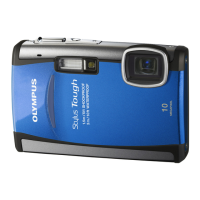
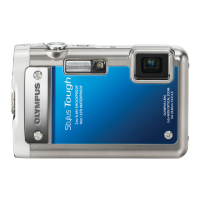
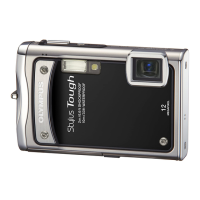
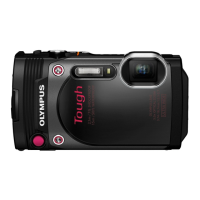
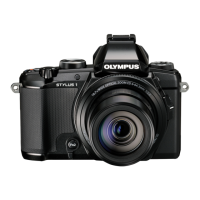
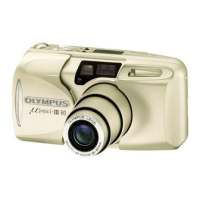
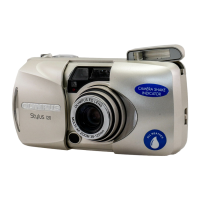




